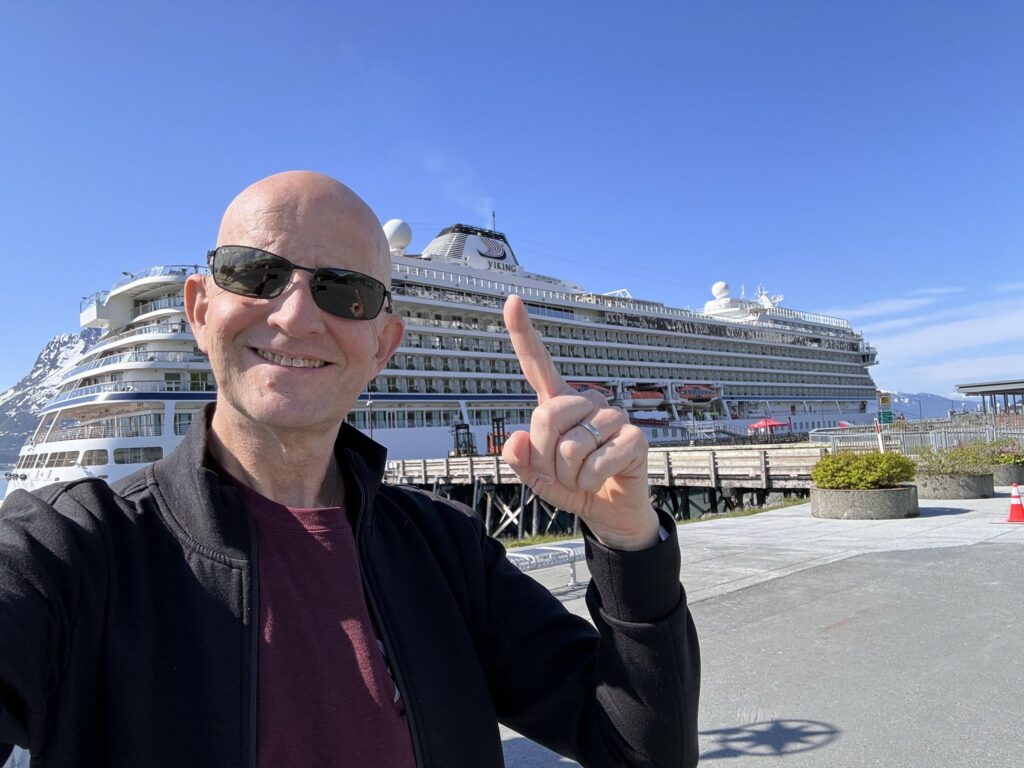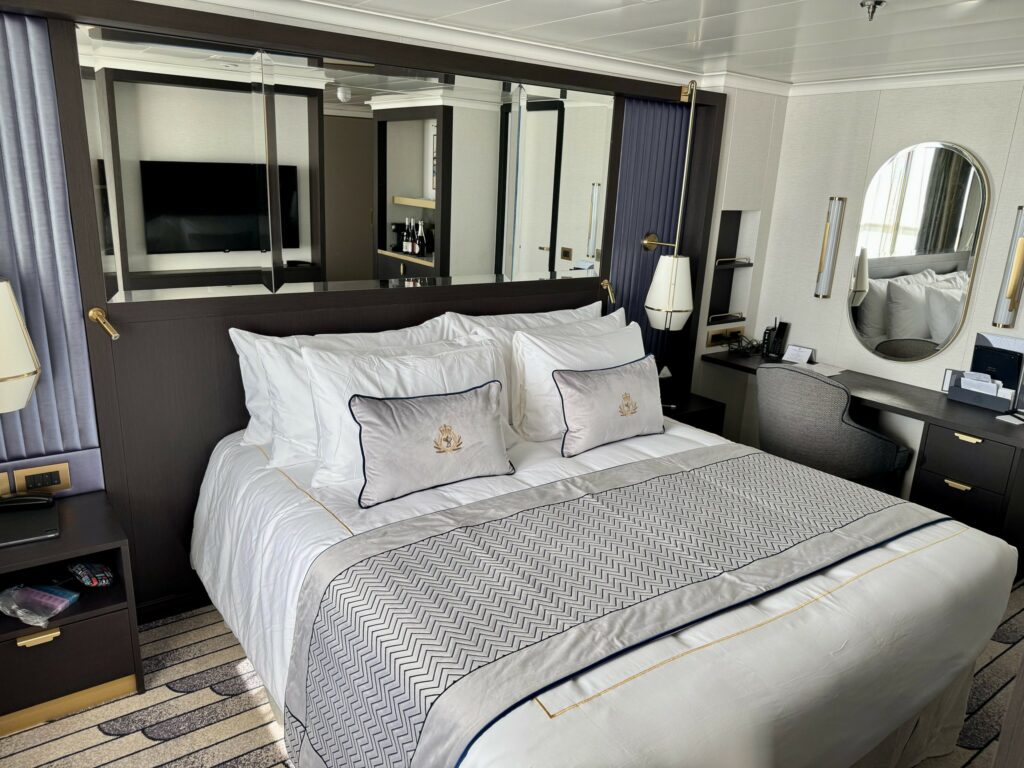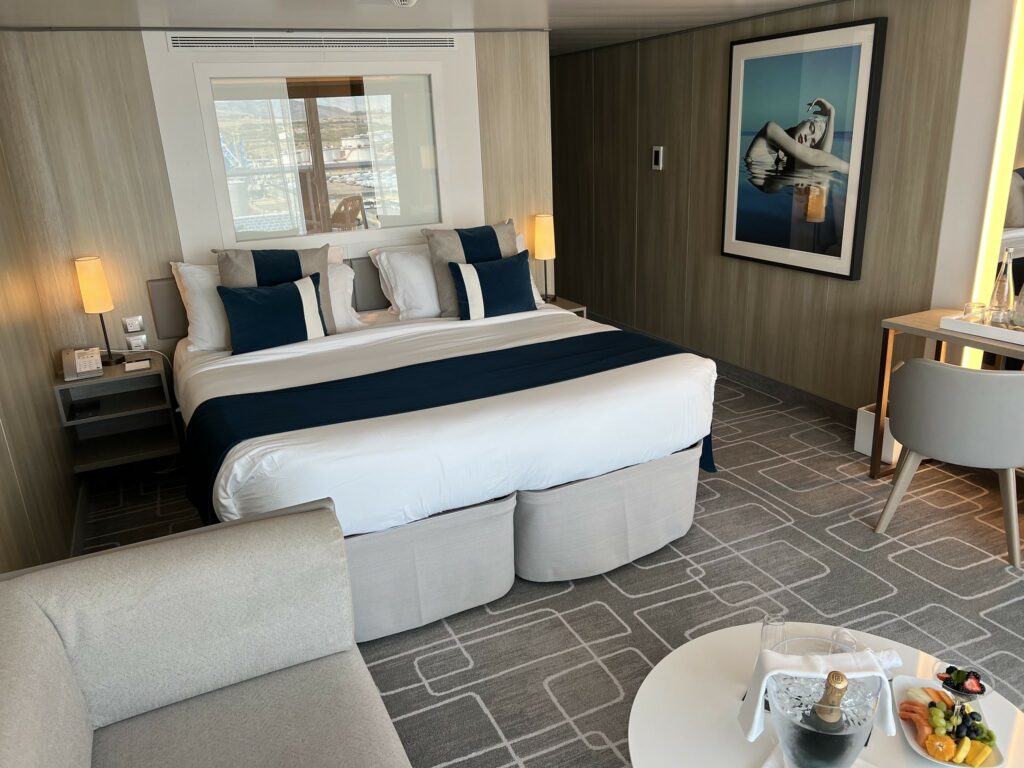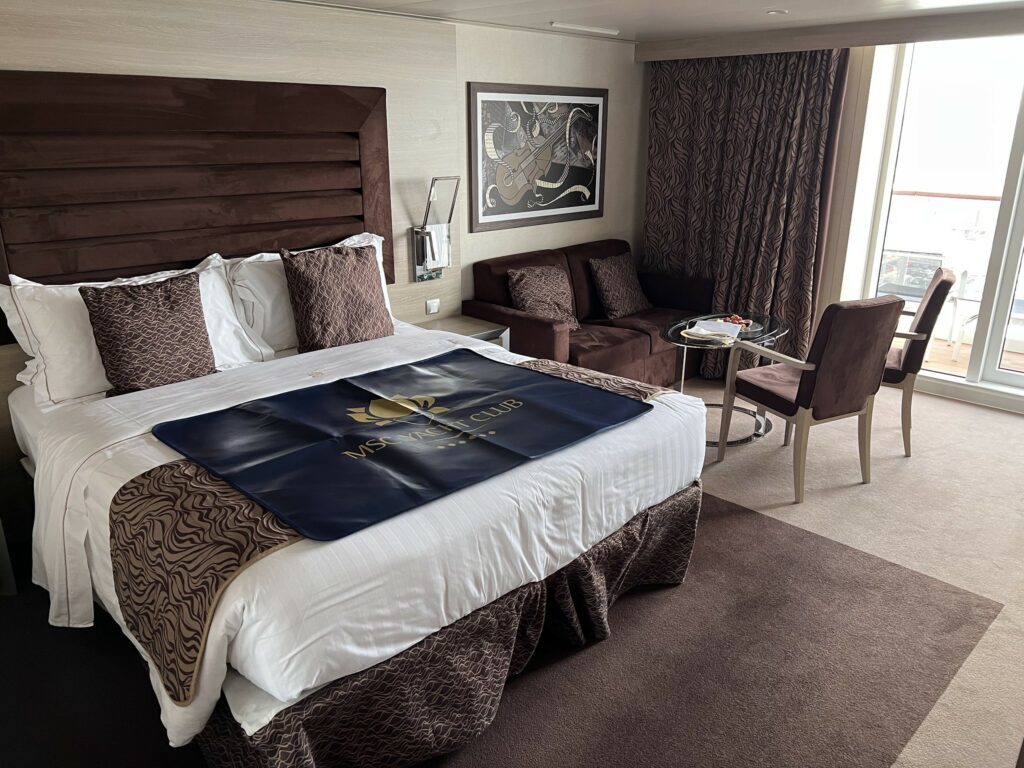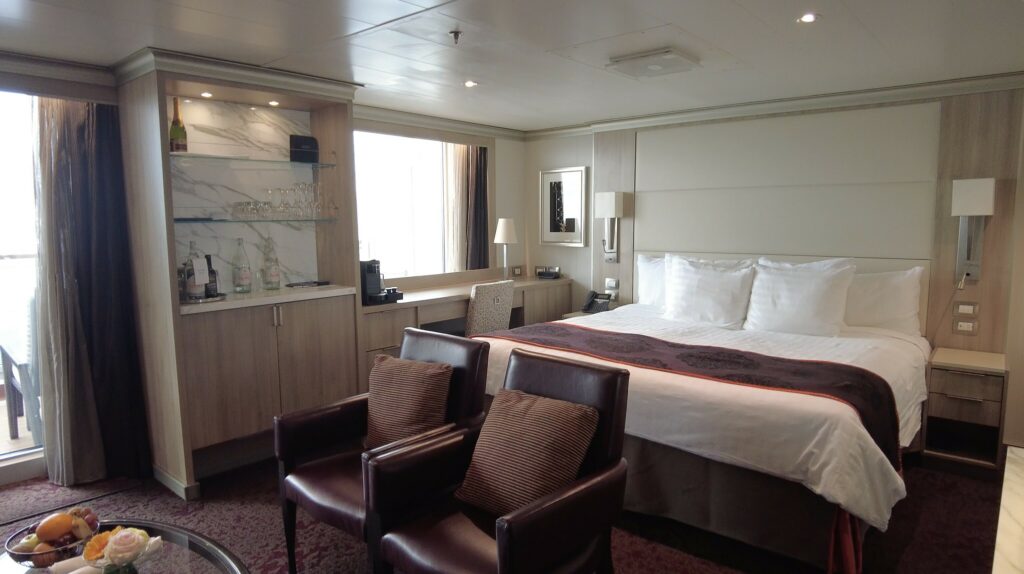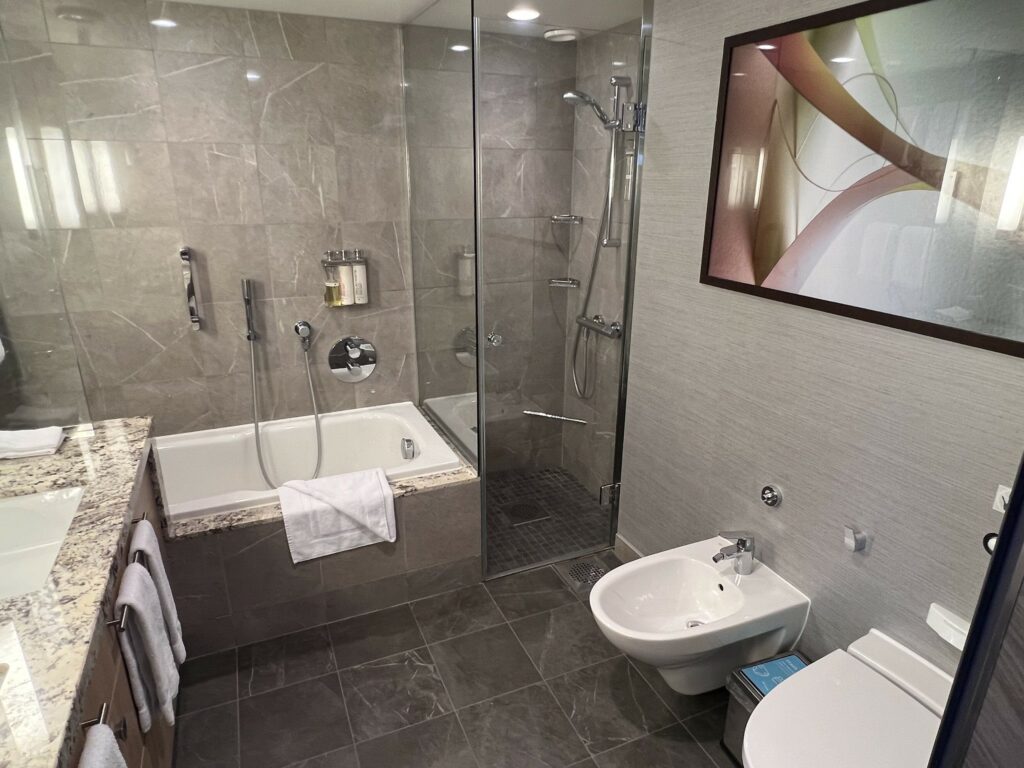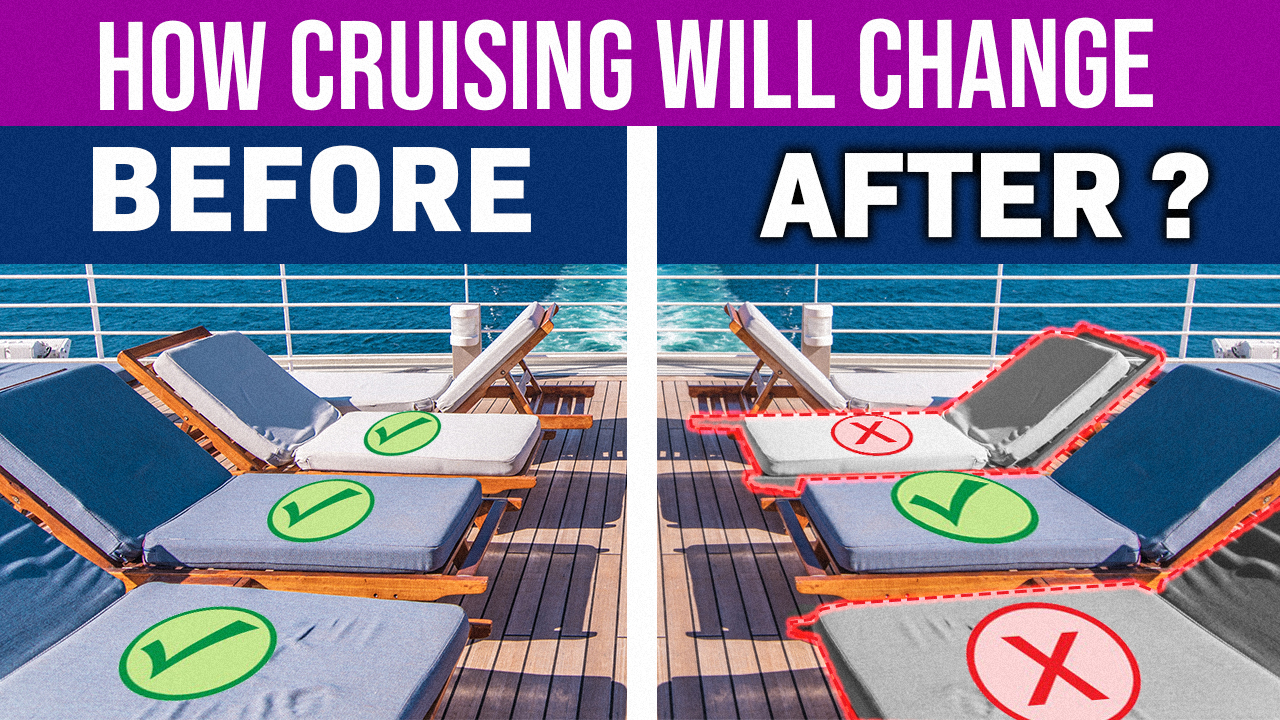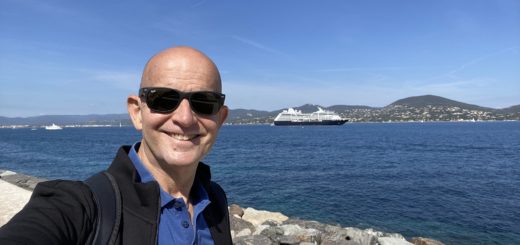The Truth About Cruise Cabins: What Every Cruiser Should Know
The Truth About Cruise Cabins: What Every Cruiser Should Know
This is the truth about cruise cabins. One thing I try not to think about as I’m settling into bed in my cruise cabin, is the sheer number of people who’ve slept in it before me. There are around 52 sets of people in the past year alone that will have used that bed before me. It’s not only something I don’t like to dwell on, but also not something the cruise lines like to draw attention to. It got me thinking about other things that they don’t like to talk to us regarding our cabin, and why.
Types Of Cabins & Trends
While most cruisers know there are 4 types of cabins, there has been a series of clever moves the lines have made in recent years to change which cabins we choose to their financial advantage.
To remind you, there are four main types of cabins: Inside (which have no windows), Oceanview (with porthole or window looking out to sea), Balcony (which have those as the name suggests) and Suites (larger and often multi-roomed).
A few things of note though. First, the price difference is surprisingly large between them.
Pricing
For example, I was recently on a Symphony of the Seas 7-night Western Caribbean cruise. An Inside cabin started at around $150 per person per night, a balcony cabin was almost twice that at nearly $300 per person per night. A Suite started from twice the price of a balcony cabin at $600 per person per night and went up to $1,400 per person per night.
That means that the cheapest suite was four times the cost of an inside cabin.
The second thing to note is that not all those 4 cabin types are available on every ship, and the cheaper ones are dropped as options the higher the category of cruise line you chose.
Resort-style mass lines like Royal Caribbean, Carnival, MSC Cruises, and Norwegian have all four types. Premium lines like Holland America, Virgin, Celebrity, Cunard and Princess usually do too.
While some of the small ship luxury lines, like Azamara do have all 4, most do not. Windstar only have Oceanview and above, and lines like Viking and Saga in this grouping only have balcony cabins and suites.
The Ultra-luxury lines like Seabourn, Regent Seven Seas, Crystal, and Silversea only have suites. Although, this is an exaggeration, as when you look at them many are in fact more like large balcony cabins.
Many lines offering suites do call larger balcony cabins with a seating area and bed area a suite, and charge suite prices. Although, a true suite should really have separate rooms for these.
Multiple Grades
The third thing to note about the four types of cabins is there isn’t just one cabin price for each of those on the ship. There are multiple grades within each of those, so they can charge more for cabins in the same category.
Often when you go to book a cabin grade, you will find different prices for them. That is mostly driven by the location, so those midships with less motion and away from noisy or busy venues will be more costly.
But, something no one is talking about, and cruise lines aren’t drawing people’s attention to when it comes to cabin types, is that cruise lines are rapidly increasing the percentage of more costly cabins on newer ships to grow revenue and profits.
The first change came with significantly increasing the percentage of balcony cabins.
More Balconies & Suites
Here’s an example of how dramatic the change is. Royal Caribbean’s oldest ship in service, at the time of writing, is Grandeur of the Seas and was introduced in 1996. Only 32% of the cabins on that ship are balcony or suites, the rest are Inside or Oceanview.
But, on their newest ships, like Symphony of the Seas I mentioned I was on, 70% of the cabins are now balconies and suites. A huge change, and as you heard earlier, they charge way more per cabin as a result.
I heard an interview with, Stephen Payne, who designed Cunard’s Queen Mary 2 transatlantic liner, and he said Cunard asked him to add many more balconies to his original design because they could charge much more per cabin and make the service more profitable. That is why on that ship they have balcony cabins cut into the hull of the ship.
Another trend to increase revenue is adding more suites and grouping them into closed off “Ship-within-a-ship” area, with dedicated restaurants, bars and pool decks. These include Celebrity Retreat, MSC Cruises Yacht Club, and Norwegian Haven.
Cruise Cabins – Suites In The “Worst” Places
On the subject of suites, one thing the lines keep quiet about is they chose to not have them in the best location on a ship.
I once went to a cruise line hosted dinner and sat next to a ship architect. He said from a design perspective, he felt suites should be on lower decks and midship, as this is the most comfortable sailing location.
But, he was always asked to place suites high up and some at the front and rear of the ship, which has the most movement in rough seas. Those are the perceived “best” locations for views by guests, and so were easier to charge a premium for and sell.
Next, is something unusual that is not spoken about and probably has never crossed your mind, and this is the unusual way cruise ship cabins are constructed and why.
Cruise Cabins – How Cabins Are Made
I saw this with my own eyes when I was invited to visit a shipyard several years ago. To my surprise, I discovered there are dedicated cruise cabin factories in a different location.
They make and transport fully assembled cabins. Complete with all the fittings, carpets, and furniture to the shipyard. Each cabin is then hoisted up by a crane and slotted into location on the ship one by one.
Cruise cabins are made on an assembly line, much like a car is, with workers doing the same specific task on each cabin as it moves along. The factories even test that the plumbing and all the electrics work before sending them to the shipyard.
The cabins are designed to be low maintenance, easy to clean and able to cope with loads of wear and tear because, as I mentioned, there are around 52 sets of people churning through each cruise cabin every year.
The walls, ceilings and doors are made of metal to be robust. They also have a special hardwearing paint coating, which makes it easy to wipe down and harder to damage. They normally have easy to dust light fittings, and many easy to clean features built in and recessed.
The bathroom floors have a slight slope and a drain hole in them. So, if there’s any water spillage that should hopefully not flood the cabin.
There are usually no sharp corners on fixtures and fittings to avoid people injuring themselves. And pretty much everything that can be is screwed down to make sure it doesn’t get knocked over or damaged through people or the sea.
Also, as cabins overall are generally small, they have storage all over the place, even having beds high enough to store suitcases underneath.
Cruise Cabins – More People Per Cabin
The next thing that has not been noticed nor is spoken about much, is also how cruise lines are increasing the percentage of cabins that can sleep more people than in the past.
Ship capacity is advertised based on double occupancy of a cabin, and the beds in most cabins can be set up as either twin beds or pushed together to make a double bed.
The only cruise lines I have been on where the beds could not be set up as either twin or double was on Disney Magic in a Verandah cabin, and in a Penthouse Suite in The Haven on Norwegian Viva. Both of those had a fixed double bed.
Newer Ships
On newer ships, I have noticed that more cabins have been designed to take a third or fourth guest. This is because the cruise lines are hoping to accelerate growth by targeting families, multi-generational travellers and to a lesser degree, groups of friends.
To help, they normally charge the full fare rate for two people, with big discounts for third and fourth guests in the cabin.
I find it rare these days to have a sofa and not a sofa bed in my cabin, and often I notice there will also be additional beds that can be pulled down from the ceiling or walls, making it much easier to have third and fourth occupancy.
These additional people per cabin is leading to many ships, especially in school vacation and big holiday seasons like Christmas, sail over official capacity, making them crowded.
For example, I went on MSC Virtuosa to the Norwegian Fjords the week before the UK school holidays, and there were 4,500 people on, but I was told by the crew that the same itinerary the week after would have 6,000 people. All those extra passengers being kids sharing cabins with their parents.
Cruise Cabins – Cabin Essentials
One thing to understand is that whilst cabin perks will differ and increase the higher the grade, fundamentally they all have the same things.
These include a bed (or beds as mentioned), bedside table with lamp and on more modern ships electric plug sockets and USB charging points. Cabin light controls by the bed, dressing table, vanity or desk with a mirror above, some seating which increases in scale and size the higher the type, and a bathroom.
Cabins have air conditioning with varying degrees of control, older ships just temperature controlled, but modern ones fan speed too.
While older ships have limited plugs and sockets, modern ships have many around the cabin including USB-C and regular USB ports. The sockets are usually mostly USA format, with one or two Euro-style.
All cabins will have toiletries, which these days tend to be large pump dispensers to reduce single use plastics. You should get shower gel, shampoo, conditioner, some sort of hand wash and body lotion.
Cabins usually have a hairdryer, coat hangers in the cupboard, and some kind of fridge. Whether it has mini-bar items in it and if you get charged for using them or not depends on your cruise line or your cabin grade status.
I have found that while many cabin lines have a safe in their cabins, not all lines do include them. Like on my last few Princess cruises.
Interactive Features
Another key feature of the cabin, and one that is becoming more important, is the television and the interactive features. You watch the safety video as part of the eMuster process, often can book dining and excursions, review the bill, and so a good alternative to using the Cruise Line App on your phone.
Many cruise lines have videos to stream on there, daily what’s on TV show run by the cruise director, bow camera channel to see what’s going on, and several TV channels.
The TV channels are limited, mostly news focused and can be erratic because although many cruise lines have moved to Starlink for their Wi-Fi, the televisions are still delivered through satellite.
I found I can’t usually stream shows from my tablet or phone nor plug laptops or game consoles into the TV.

